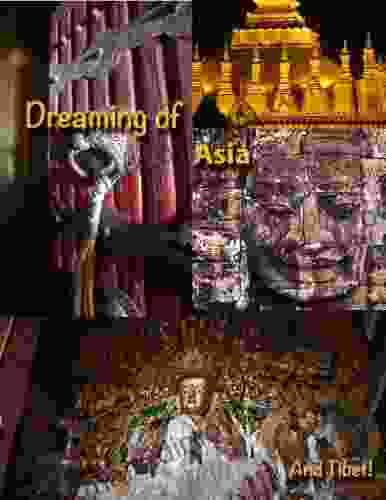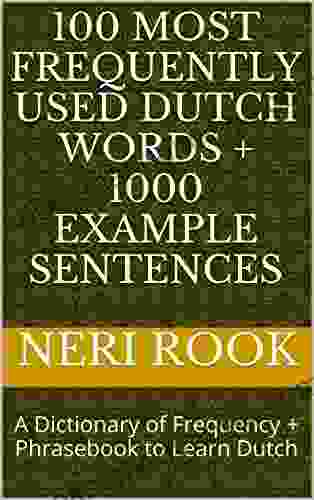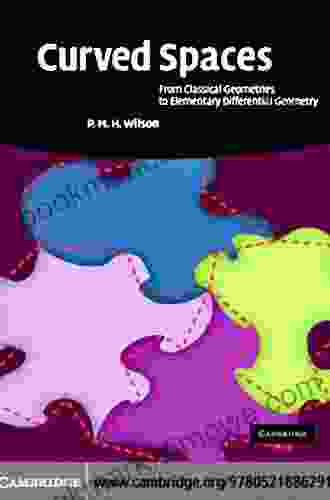From Classical Geometries to Elementary Differential Geometry

Geometry, the study of shape and space, has a rich and fascinating history that spans millennia. From the early days of Euclidean geometry to the more recent advent of differential geometry, this field has played a pivotal role in our understanding of the world around us. In this article, we will explore the evolution of geometry, from its classical roots to its modern manifestations in differential geometry.
Classical Geometries
The foundations of geometry were laid by the ancient Greeks. In particular, Euclid's Elements, written in the 3rd century BCE, laid out the principles of Euclidean geometry, which would remain unchallenged for over 2000 years. Euclidean geometry is based on the idea of a flat, two-dimensional space, and its axioms (such as the parallel postulate) describe the relationships between points, lines, and angles in this space.
4.8 out of 5
| Language | : | English |
| File size | : | 2986 KB |
| Screen Reader | : | Supported |
| Print length | : | 198 pages |
| X-Ray for textbooks | : | Enabled |
Around the same time that Euclid was developing his geometry in Greece, other civilizations were also exploring geometric ideas. In India, for example, the mathematician Baudhayana developed a set of rules for constructing altars, which included a geometric construction for finding the square root of 2. In China, the Mohists developed a form of geometry that included ideas about infinity and the concept of a "curved line".
Non-Euclidean Geometries
The development of non-Euclidean geometries in the 19th century challenged the long-held belief that Euclidean geometry was the only possible geometry. Non-Euclidean geometries are based on the idea that space can be curved, rather than flat. The first non-Euclidean geometry was developed by the Russian mathematician Nikolai Lobachevsky in 1829, and shortly thereafter, the Hungarian mathematician János Bolyai published similar results.
Non-Euclidean geometries have a number of interesting properties that distinguish them from Euclidean geometry. For example, in non-Euclidean geometries, the parallel postulate does not hold, and the sum of the angles in a triangle can be greater or less than 180 degrees. These properties have led to a wide range of applications in fields such as physics and cosmology.
Differential Geometry
Differential geometry is a more modern branch of geometry that emerged in the 19th century. Differential geometry is concerned with the study of smooth, differentiable surfaces and spaces. One of the key concepts in differential geometry is the differential calculus, which provides a way to calculate the derivatives of functions defined on smooth surfaces. The differential calculus can be used to study a wide range of geometric properties, such as curvature, geodesics, and topology.
Differential geometry has a number of applications in other fields, such as physics, engineering, and computer graphics. For example, differential geometry is used in physics to describe the behavior of fluids and deformable bodies, and in computer graphics to create realistic 3D models.
The evolution of geometry from its classical roots to its modern manifestations in differential geometry is a fascinating tale of human ingenuity and creativity. Geometry has played a vital role in our understanding of the world around us, and it continues to be a source of new insights and discoveries.
4.8 out of 5
| Language | : | English |
| File size | : | 2986 KB |
| Screen Reader | : | Supported |
| Print length | : | 198 pages |
| X-Ray for textbooks | : | Enabled |
Do you want to contribute by writing guest posts on this blog?
Please contact us and send us a resume of previous articles that you have written.
 Book
Book Novel
Novel Page
Page Chapter
Chapter Text
Text Story
Story Genre
Genre Reader
Reader Library
Library Paperback
Paperback E-book
E-book Magazine
Magazine Newspaper
Newspaper Paragraph
Paragraph Sentence
Sentence Bookmark
Bookmark Shelf
Shelf Glossary
Glossary Bibliography
Bibliography Foreword
Foreword Preface
Preface Synopsis
Synopsis Annotation
Annotation Footnote
Footnote Manuscript
Manuscript Scroll
Scroll Codex
Codex Tome
Tome Bestseller
Bestseller Classics
Classics Library card
Library card Narrative
Narrative Biography
Biography Autobiography
Autobiography Memoir
Memoir Reference
Reference Encyclopedia
Encyclopedia Miles Hordern
Miles Hordern Mark Jasper
Mark Jasper Happy Books
Happy Books Ian Slatter
Ian Slatter J S Lee
J S Lee Maude White
Maude White Gudrun Helga Sigurdardottir
Gudrun Helga Sigurdardottir Greg Jacobs
Greg Jacobs Jonathan Thomason
Jonathan Thomason Mark Scott
Mark Scott Sanil Mittal
Sanil Mittal Helen Epstein
Helen Epstein Gretchen E Minton
Gretchen E Minton Ian Diamond
Ian Diamond Max Blue
Max Blue Helen Krasner
Helen Krasner Hein Smith
Hein Smith Jann Weeratunga
Jann Weeratunga Hazel Edwards
Hazel Edwards Heather Zoppetti
Heather Zoppetti
Light bulbAdvertise smarter! Our strategic ad space ensures maximum exposure. Reserve your spot today!
 Galen PowellFollow ·9.6k
Galen PowellFollow ·9.6k Preston SimmonsFollow ·2.5k
Preston SimmonsFollow ·2.5k Quincy WardFollow ·13.9k
Quincy WardFollow ·13.9k Mark TwainFollow ·9k
Mark TwainFollow ·9k Denzel HayesFollow ·16.4k
Denzel HayesFollow ·16.4k Clayton HayesFollow ·15k
Clayton HayesFollow ·15k Luke BlairFollow ·12k
Luke BlairFollow ·12k Harold PowellFollow ·12.6k
Harold PowellFollow ·12.6k

 Owen Simmons
Owen SimmonsEmbark on an Extraordinary Adventure through Central...
Unveiling the Enigmatic Heart of...

 Samuel Taylor Coleridge
Samuel Taylor ColeridgeUnveiling the Enchanting Tapestry of Italy: A Journey...
Prepare to be captivated...

 Mitch Foster
Mitch FosterTraveling to Asia: Uncover the Enthralling Charms of...
Embark on an...

 Jamison Cox
Jamison CoxEmily's Ride to Courage: An Unforgettable Journey of...
Emily's Ride to...

 Voltaire
VoltaireUnlock the Secrets of Dutch Communication with the...
Embark on an...

 Gary Cox
Gary Cox**From Principles to Practice: A Comprehensive Guide to...
**** In today's globalized world, the...
4.8 out of 5
| Language | : | English |
| File size | : | 2986 KB |
| Screen Reader | : | Supported |
| Print length | : | 198 pages |
| X-Ray for textbooks | : | Enabled |












